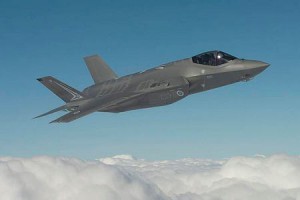Australia’s new frontline F35A Lightning II Joint Strike Fighters may be years late and billions over budget, but when they do arrive they will be housed at a state of the art Air Force base.
The Government has announced an extra $274 million in upgrades to the Williamtown RAAF Base north of Newcastle, where 58 of the 72 fighters already ordered will be based, with plans to order 28 more, giving Australia 100 of the planes.
The amount pledged this week is in addition to nearly $1 billion already promised to improve facilities at Williamtown, which shares its main runway with Newcastle Airport.
The JSF was first mooted in 1996, and the first contracts for its development signed with prime contractor Lockheed Martin in 2001. Its history since then – like so many major defence purchases — has been marked by delay and controversy, with many aerospace and defence experts criticising its performance and its value for money.
A major redesign to save weight cost the project 18 months ten years ago, and the first planes were not produced until 2010. Since then there have been many more delays and cost overruns, with the fighter’s chequered development program a source of persistent scrutiny in the US Congress.
Australia ordered the JSF in 2009 after years of debate, for a total cost of $12.4 billion. Two training aircraft have already been delivered, with the first operational versions due to arrive in 2018. The Government is sticking to that date, despite previous delays. There will be two squadrons based at Williamtown, planned to be operational by 2021.
The most recent announcement will provide funds for new and refurbished office accommodation and commercial facilities. A number of ageing buildings, which do not meet current building, safety, environmental or security standards, will be demolished. Other structures, such as headquarters, operational and storage facilities, will be refurbished.
Engineering services for electricity, sewerage, telecommunications, fire and water will be upgraded or replaced. The base entrance will also be rebuilt as part of a major security upgrade. Construction is due to start in the middle of 2016 and continue until mid-2021.
The Government’s announcement said industry and small businesses in the Hunter region are encouraged to compete for building contracts. “With more than 3,000 military and civilian personnel employed on the base, RAAF Williamtown makes a substantial contribution to the local Hunter economy. The redevelopment will provide off-site manufacturing and transport opportunities for local businesses.”
Prime Minister Tony Abbott visited Williamtown this week to announce the extra money.
“The investment the Government is making into RAAF Base Williamtown (will) make it a first-class base, a next-generation base, for the next-generation Strike Aircraft of the RAAF,” he said.
“It’s very important that government do everything it can to maintain our defences. It’s at the heart of what government does. A first-class fighting force supported by first-class facilities is an important part of that. That’s what this $1.2 billion investment in RAAF Base Williamtown will do.
“The Joint Strike Fighter is the next-generation strike aircraft for the RAAF. It will enable us to maintain our performance edge. It will enable us to continue to be interoperable with the US and our other major allies.”
The Prime Minister was asked, in light of the delays with the plane and the controversies in the US about its abilities, whether he was confident Australia is buying the right planes.
“We are absolutely buying the right plane. This is the fighter of the future and it’s good that it will be in active service with our air force.”
Comment below to have your say on this story.
If you have a news story or tip-off, get in touch at editorial@governmentnews.com.au.
Sign up to the Government News newsletter


